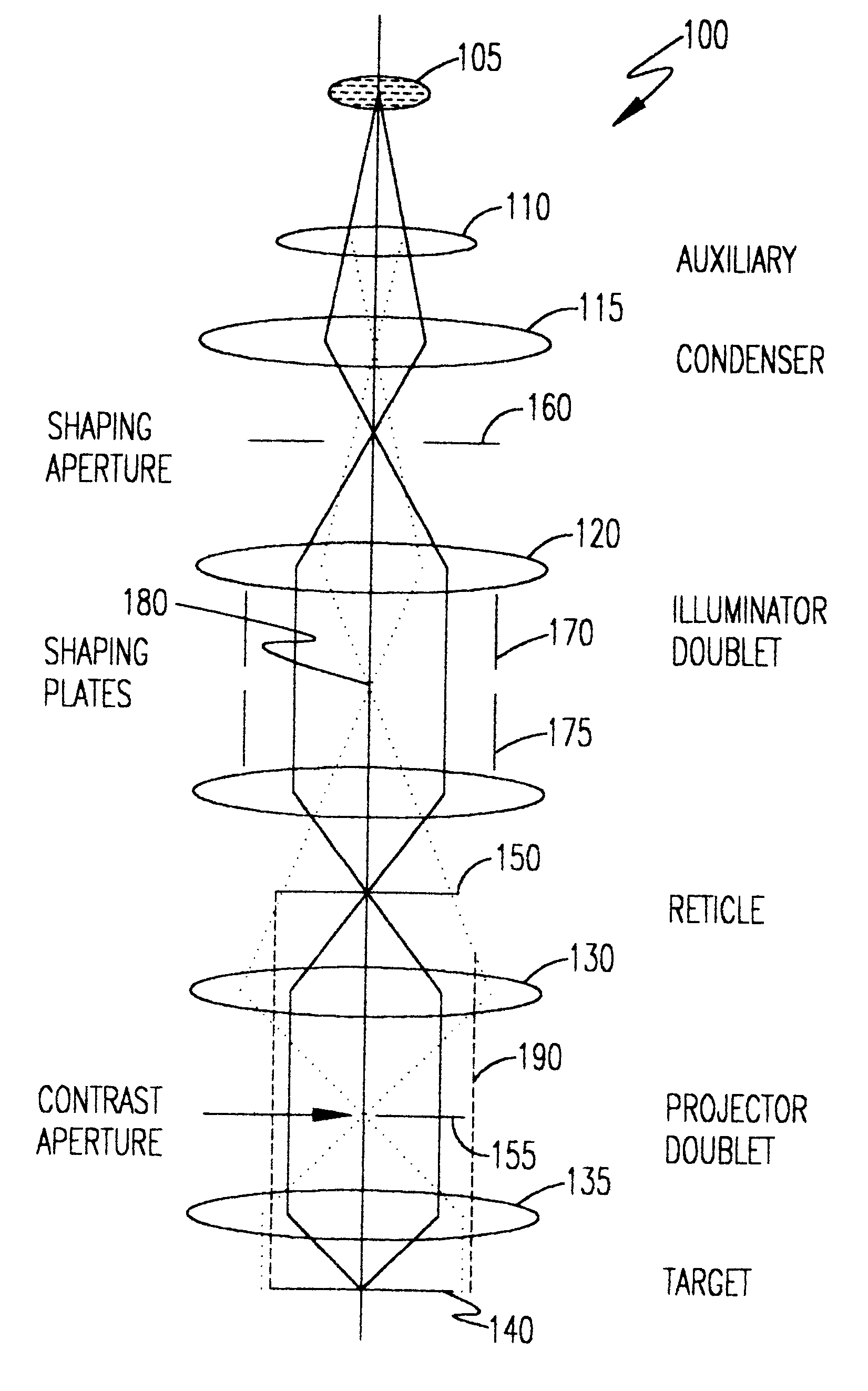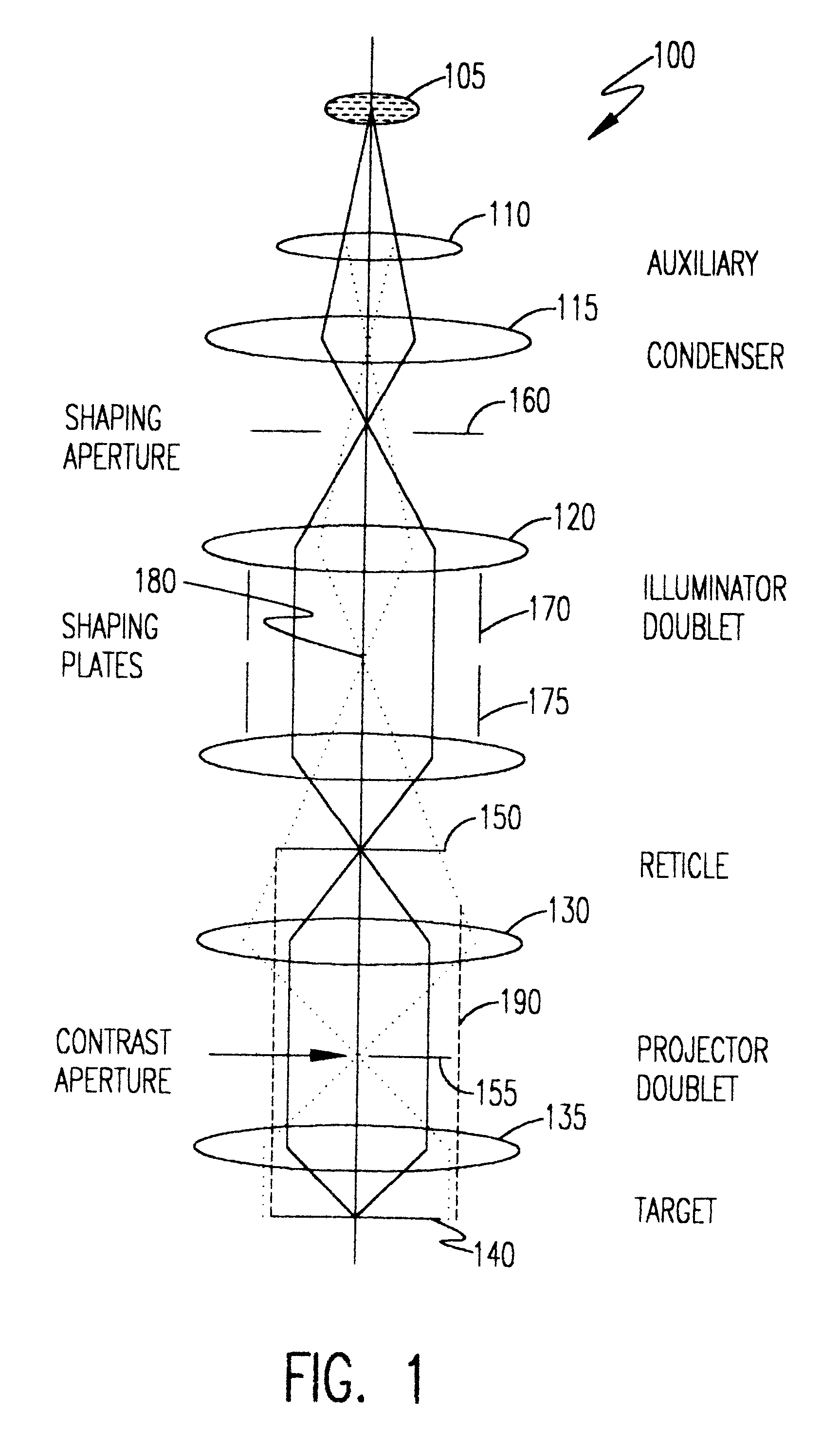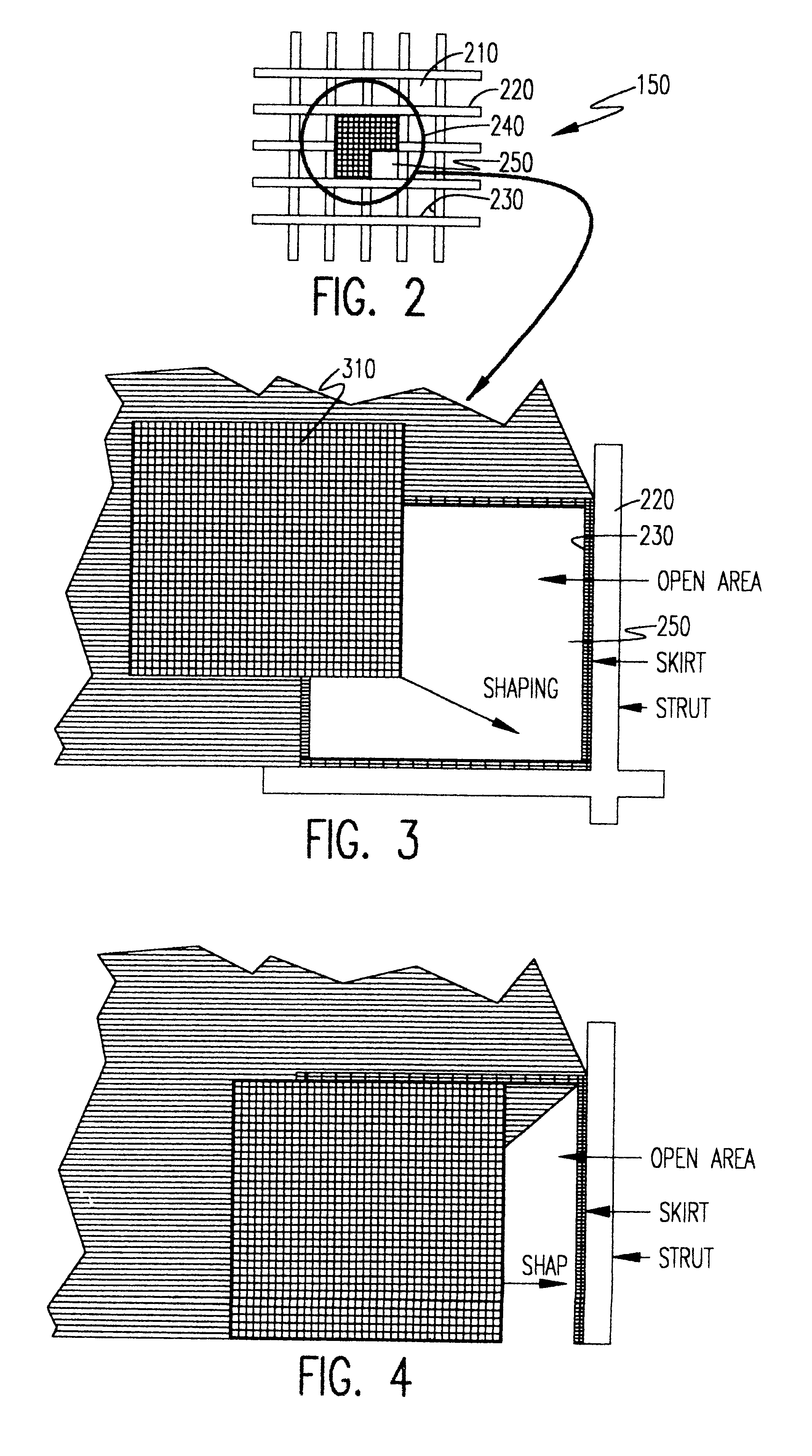Charged particle beam projection lithography with variable beam shaping
a technology of projection lithography and charge particle beam, applied in the field of projection reticles, can solve the problems of large integrated circuits, large size integrated circuits, and low throughput of probe-forming exposure tools, so as to achieve the effect of high precision and complexity, and large-scale integrated circuits
- Summary
- Abstract
- Description
- Claims
- Application Information
AI Technical Summary
Benefits of technology
Problems solved by technology
Method used
Image
Examples
Embodiment Construction
Referring now to the drawings, and more particularly to FIG. 1, there is shown, in highly schematic form, a charged particle beam column 100 in accordance with the invention. It should be understood that the preferred implementation of the invention employs an electron beam and, while the invention will be explained with reference thereto, the principles of the invention are also fully applicable to beams of ions, as well. Therefore, any reference to electrons and / or electron beams hereinafter should be understood as reflecting the preferred implementation and not as excluding other charged particles or charged particle beams to which the invention may also be applied.
The electron beam column 100 includes an electron (or other charged particle) source 105, a condenser lens arrangement 115, which may include one or more lenses and auxiliary lenses 110 used to position the source cross-over of the beam, an illuminator doublet 120, 125, to provide illumination of a reticle subfield, a ...
PUM
| Property | Measurement | Unit |
|---|---|---|
| size | aaaaa | aaaaa |
| size | aaaaa | aaaaa |
| area | aaaaa | aaaaa |
Abstract
Description
Claims
Application Information
 Login to View More
Login to View More - R&D
- Intellectual Property
- Life Sciences
- Materials
- Tech Scout
- Unparalleled Data Quality
- Higher Quality Content
- 60% Fewer Hallucinations
Browse by: Latest US Patents, China's latest patents, Technical Efficacy Thesaurus, Application Domain, Technology Topic, Popular Technical Reports.
© 2025 PatSnap. All rights reserved.Legal|Privacy policy|Modern Slavery Act Transparency Statement|Sitemap|About US| Contact US: help@patsnap.com



